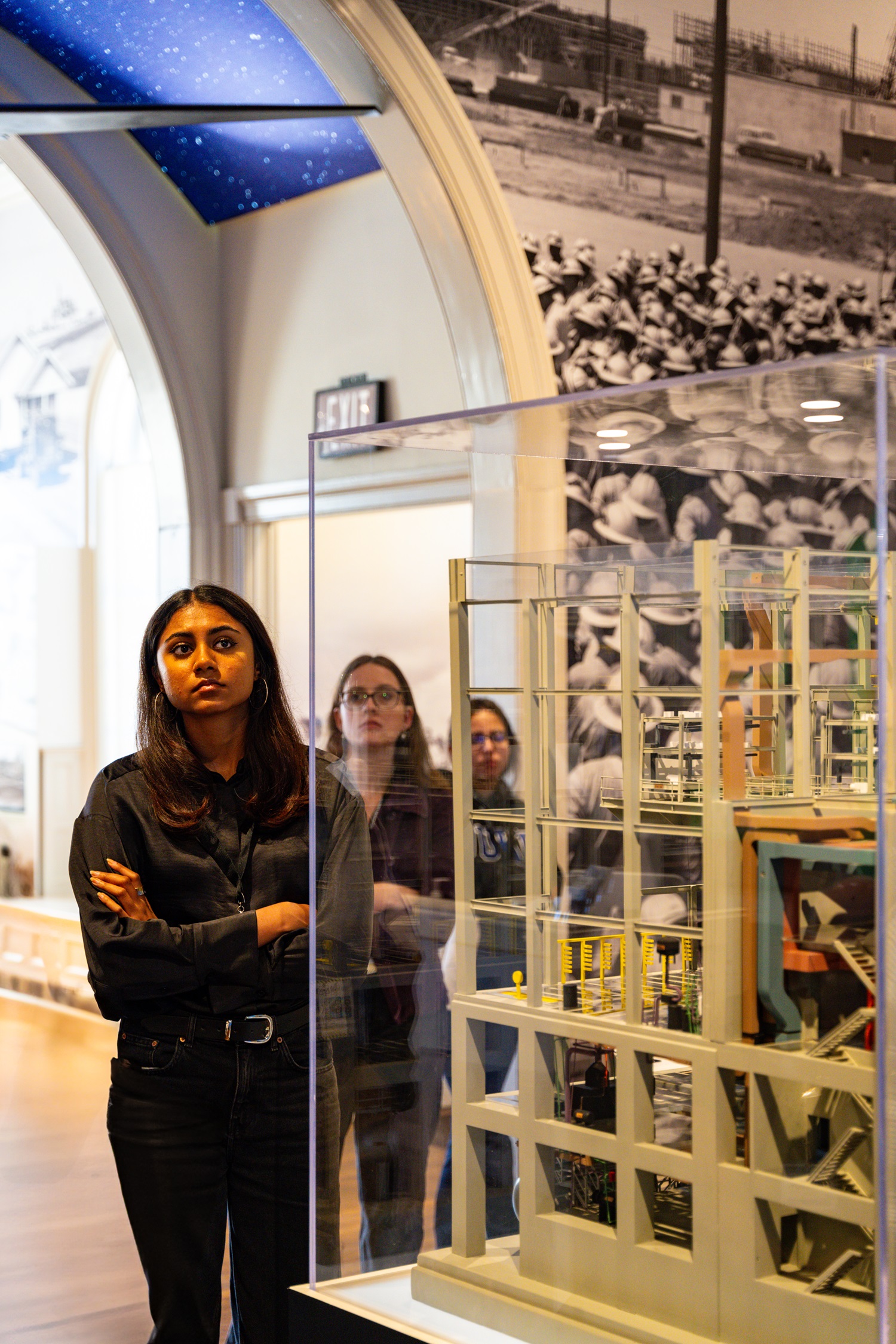A research team from Duke University’s Nicholas Institute for Energy, Environment, and Sustainability recently visited Aiken for a firsthand view of the nuclear industry and history of the Savannah River Site.
Office of Environmental Management
November 26, 2024AIKEN, S.C. — A research team from Duke University’s Nicholas Institute for Energy, Environment, and Sustainability recently visited Aiken for a firsthand view of the nuclear industry and history of the Savannah River Site (SRS).
The visit took place in late October during Nuclear Science Week, when SRS celebrates the vital role nuclear science plays in the United States and around the world.
“By connecting Duke University visitors with the site’s history and current missions, this daylong event bridges the gap between academic research and real world nuclear industry experience,” said Kim Mitchell, lead for Education Outreach with Savanah River Nuclear Solutions, the site’s management and operations contractor.
Part of a Duke University project titled, “Reexamining Nuclear Power in the Carolinas and Beyond,” the three faculty members and eight student researchers are exploring the historical context of nuclear power. The team is preparing a grant proposal for a yearlong project on the future of the region’s nuclear energy and aims to launch a publicly accessible website for unpublished documents preserved at Duke.
“We’re looking at the history of nuclear power in the Carolinas, but also thinking about the next 50 years of energy generation in the region,” said Tom Cinq-Mars, faculty lead for the project. “Our goal is to understand how nuclear power fits into the future energy landscape.”

Ananya Misra, a sophomore at Duke University, tours the Savannah River Site Museum.
A tour of SRS allowed the researchers to see the scale of site operations. Cinq-Mars emphasized the importance of the experience for students, noting it allowed them to move beyond textbooks and understand the real world implications of their research.
“Our students could see that this isn’t just a theoretical project,” said Cinq-Mars. “It gave them a deeper understanding of the political and funding complexities that come with managing nuclear material.”
The team also stopped at the Savannah River Site Museum and Café Scientifique, where they learned about the evolution of the nuclear industry and the environmental challenges of balancing nuclear weapons development with Cold War era cleanup efforts. The science café is part of a grassroots movement for informal science and technology education.
Sophomore Ananya Misra is one of research team members. She highlighted the value of the visit, where she connected the dots between the site’s history and her studies. As a public policy major, Misra was particularly interested in regulatory changes that have taken place over the years at SRS.
“This experience gave me a concrete understanding of how policies and regulations evolve over time,” Misra said. “For our project, I have compiled an archive of historical documents, and seeing the infrastructure changes firsthand really brought it all together. It’s fascinating to see how much significant development occurred in such a short amount of time.”
The team also attended a Center for Nuclear Technology Advancement (CNTA)-sponsored Edward Teller Lecture and a Nuclear Technology Expo dinner at the Columbia County Expo Center. The SRS Education Outreach team and CNTA partnered to help organize the visit.
“This tour provided an invaluable experience for our research group,” Misra added. “SRS operations is applicable to so many different fields — science, public policy, national security. There’s something to learn here for everyone.”
-Contributor: Mackenzie McNabb
To receive the latest news and updates about the Office of Environmental Management, submit your e-mail address.


